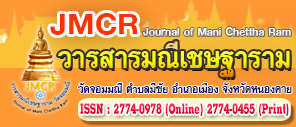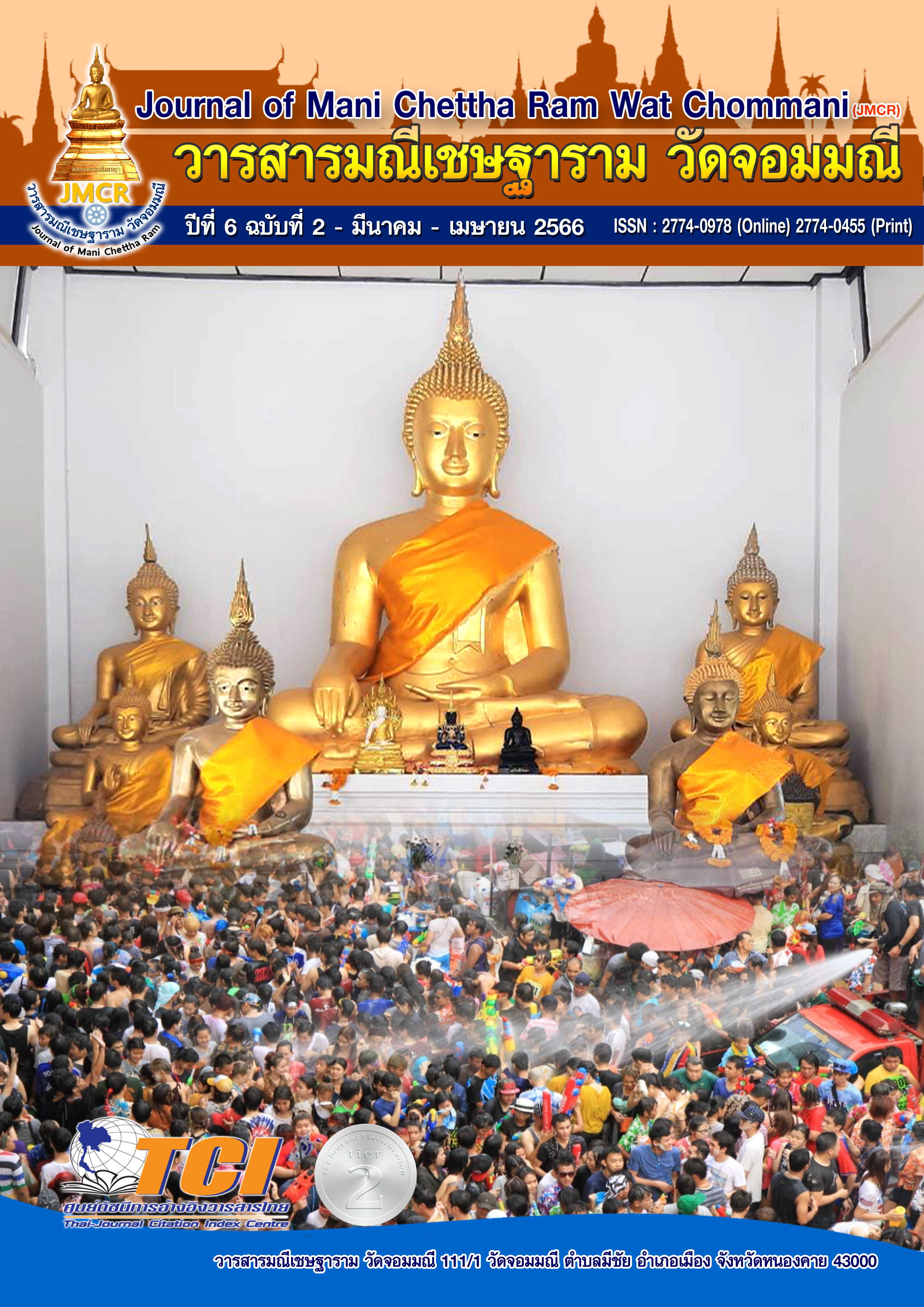AN APPLICATION OF PAVANADHAMMEPRINCIPLES FORLIFE QUALITY PROMOTIONOF THE ELDERLY IN MUANG KHLONGHAE MUNICIPALITY, HAD YAI DISTRICT, SONGKHLA PROVINCE
Keywords:
promotionmeditation, quality of life promotion, elderlyAbstract
The objectives of this research were: 1. to use the pavanadhammeprinciples to enhance the quality of life of the elderly in Muang Khlong Hae Municipality, Hat Yai District, Songkhla Province and 2. to study the development method for applying the principles of meditation to enhance the quality of life of the elderly in Khlong Hae Municipality, Hat Yai District, Songkhla Province. The sample used in the research were elderly people in Khlong Hae Municipality, Hat Yai District, Songkhla Province. Number of sample population 251 people the main informant was 5 experts/person. This research was mixed. Quantitative research collected data using a questionnaire. Data were analyzed by frequency distribution, percentage, mean and standard deviation. Qualitative research used structured interviews and content analysis.
The research results showed that 1) The use of meditation principles to promote the quality of life of the elderly in Khlong Hae Municipality, Hat Yai District, Songkhla Province was at a moderate level. The aspect with the highest average was spiritual meditation, followed by physical meditation and intellectual meditation, and moral meditation had the lowest average.
2) Guidelines for the development of the application of meditation principles to promote the quality of life of the elderly in Khlong Hae Municipality, Hat Yai District, Songkhla Province. The application of meditation principles to promote the quality of life of the elderly can be used to promote and develop a happy life. It can be applied in daily life to achieve efficiency in living a good life.
References
กันตยา มานะกุล. (2550). การพัฒนาคุณภาพชีวิตโดยยึดปรัชญาเศรษฐกิจพอเพียง. กรุงเทพมหานคร.
กรมกิจการผู้สูงอายุ. (2560). ข้อมูลสถิติจำนวนผู้สูงอายุประเทศไทย ปี 2559. เรียกใช้เมื่อ 12 เม.ย. 64 จาก http://www.dop.go.th.
ชนิดา เล็บครุฑ. (2554). ผลกระทบของคุณภาพชีวิตในการททำงานที่มีต่อความผูกพันต่อองค์การของบุคลากรสายสนับสนุน. กรุงเทพมหานคร.
ทวีทอง หงส์วิวัฒน์ และคณะ. (2545). พฤติกรรมสุขภาพรวมบทความจากการประชุมวิชาการพฤติกรรมสุขภาพ ครั้งที่ 1. กรุงเทพมหานคร.
นิศารัตน์ ศิลปเดช. (2540). ประชากรกับการพัฒนาคุณภาพชีวิต. พิมพ์ครั้งที่ 2กรุงเทพมหานคร : พิศิษฐ์การพิมพ์.
บุษยมาส สินธุประมา. (2539). สังคมวิทยาความสูงอายุ. พิมพ์ครั้งที่ 1 เชียงใหม่ : โรงพิมพ์สา
ธรการพิมพ์.
คะนึงนิจ อนุโรจน์. (2539). แนวทางในการพัฒนาตนสู่การพัฒนาคุณภาพชีวิต.กรุงเทพมหานคร : โรงพิมพ์มหาจุฬาลงกรณราชวิทยาลัย.
พระพรหมคุณาภรณ์, (ป.อ. ปยุตฺโต). (2559). พจนานุกรมพุทธศาสตร์ ฉบับประมวลธรรม ครั้ง
ที่ 34. กรุงเทพมหานคร : สำนักพิมพ์ธรรมสภา.
ประภัสสร กิมสุวรรณวงศ์. (2555). การดูแลสุขภาพแบบองค์รวมของผู้สูงอายุตามแนวคิดทาง
พระพุทธศาสนา วารสารบัณฑิตศึกษาปริทรรศน์ วิทยาเขตขอนแก่น, 8(3).
ปิยะวัฒน์ ตรีวิทยา. (2559). กรอบแนวคิดเกี่ยวกับคุณภาพชีวิต วารสารเทคนิคการแพทย์
เชียงใหม่, 49(2).
คะนึงนิจ อนุโรจน์, แนวทางในการพัฒนาตนสู่การพัฒนาคุณภาพชีวิต. เรียกใช้เมื่อ 12 พ.ค. 63 จากhttps://webcache.googleusercontent.com/search?q=cache:NmUSNvlJ09gJ:https://www.gotoknow.org/posts/148813+&cd=50&hl=th&ct=clnk&gl=th.
ชูฤทธิ์ เต็งไตรสรณ์. (2565). กายหายไข้ใจหายทุกข์, เรียกใช้เมื่อ 12 พ.ค. 63 http://suchart.rmutl.ac.th/Misc/Churit.php.




